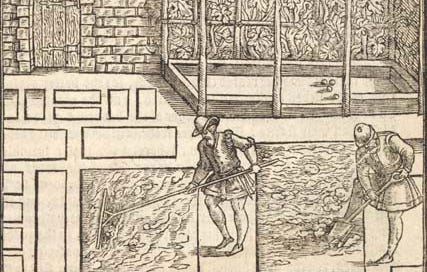What can we learn from 16th-century medicinal plants during a pandemic?
"Phisicke herbes" are a radically democratic, embodied, sensory kind of evidence through which to understand our current moment of medical crisis.
“Epidemics are not solely a function of pathogens,” the historians of medicine Erica Charters and Richard A. McKay wrote recently. “They are also a function of how society is structured, how political power is wielded in the name of public health, how quantitative data is collected, how diseases are categorised and modelled, and how histories of disease are narrated. Each of these activities has its own histories.” If we want to understand our current moment of medical crisis, we have to understand those histories too. During the first wave of the Covid-19 pandemic, many of us sought this understanding in literary accounts of diseases past. There was the grim relatability of the exacting daily death tolls in Daniel Defoe’s Journal of the Plague Year (itself a morbidly nostalgic 1722 fictionalisation of an earlier outbreak). Then there was the febrile confinement of Boccaccio’s 14th-century Decameron. Jacqueline Rose wrote in the LRB about how “sales of Albert Camus’s The Plague, first published in 1947, have increased exponentially, an upsurge strangely in line with the graphs that daily chart the toll of the sick and the dead.”
The obvious risk of these literary comparators is the way in which they invite parallels of “universal” human experience, flattening out the deep fissures of history, race, class, gender and ability by which that experience is conditioned and cleft. Covid-19 has interacted in volatile, unpredictable ways with our unique moment, spreading contagiously into unexpected areas of our culture and politics. So, as England goes back into national lockdown, how can we draw on the past in a way which usefully informs our present, but which also teases out the friction between and within different periods, peoples and paradigms?
In this newsletter, I suggest that one answer might be plants. Back in March, I was reading The Gardener’s Labyrinth, a 1577 sequel to the first wildly popular gardening manual by Thomas Hill (perhaps England’s earliest celebrity horticulturist). In it, Hill writes about medicinal plants: “to sowe and plant diuers Phisicke herbes, and pleasant floures, shall… yeel a commoditie to our bodies, in curing sundry griefes as wel in women, as men.” The “Phisicke herbes” Hill writes about have been grown in medical gardens for hundreds of years or more, and many are still used in medicines today: feverfew, hyssop, nettle, marigold, elderflower. As well as medical histories, they always have literary and artistic tales to tell. But unlike artworks or books held in special collections, they remain accessible in gardens, in streets and in fields; there for us to see, hold, pick, taste and smell; to crush between our fingers, or throw into a cooking pot. This makes them a radically democratic, embodied, sensory kind of evidence through which to understand our current moment of medical crisis.
So, in order to try and make sense of where we are and how we got here, I’ll be writing a regular profile—a sort of botanical biography—of an early modern medicinal plant. Some are grown in the Physic Garden of the Barber-Surgeon’s Hall, near where I live in London. Others can be found in pavement cracks, building sites, or wherever there’s turned-over ground. By examining the medical and cultural histories of these “Phisicke Herbes,” as well as how they feel, smell, look and taste, I’ll think about the lessons they might hold for our disease-stricken world. In offering a richer, more embodied kind of historical context (or at least some weird botanical facts and unexpected etymological quirks), I hope that The Physic Garden can serve in some small way as a moment of calm and solace amidst Lockdown 2.0; a balm or a salve for our “sundry griefes.”



